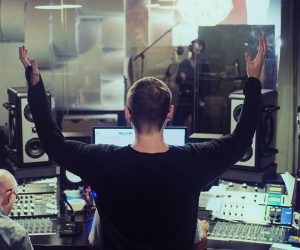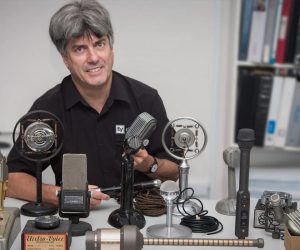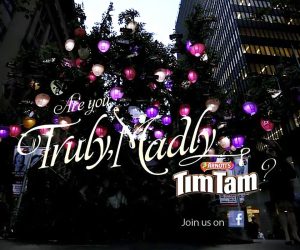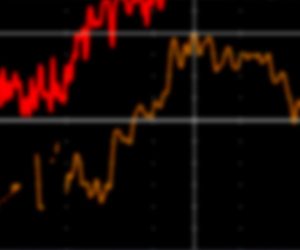
Glenn Cardier
Four-star Sydney Morning Herald reviews for albums recorded in a mud brick home studio on the computer-age equivalent of a steam-powered engine might sound like fantasy. But meet Glenn Cardier, now self-producing the second phase of a recording career that began back in the days of contracted ‘recording artists’.
Story: Ian Dearden
Glenn Cardier is a working class lad from Brisbane, who after appearing in Hoadley’s Battle of the Sounds, and on Channel 9’s New Faces, entered into a national songwriting competition on Bandstand. Glenn didn’t win the competition, but he did score a major label recording contract with Festival Records, which lead to the release of three albums, Days of Wilderness (Festival/Infinity, 1972), Only When I Laugh (Festival/Infinity, 1974), and Glenn Cardier (Interfusion, 1976).
It was both an exciting and frustrating time for Glenn. Because although he was surrounded by great in-house talent and cutting-edge gear for the time, the template for recording would typically involve Glenn laying down his guitar and lead vocals, then sitting on the sidelines watching his tracks get ‘dressed up’ by in-house arrangers, producers and A&R men. In early 1980, he recorded one final single for Festival (Expectations/I Saved Annette From Drowning), but its lack of chart success signalled the end of his major label career.
Glenn then fronted the Bel-Aires for five years in Sydney’s booming pub rock circuit of the early 1980s. And he also wrote and recorded the flipside of the hugely successful Mojo Singers single C’mon Aussie C’mon, (a song called Establishment Blues) under the pseudonym Sidney Hill (because he was still contracted to Festival at the time), before disappearing from public view.
MUDDY MAGIC
Glenn eventually moved into a mud brick house that he built on the Hawkesbury River, just north of Sydney. And there, in a 3m by 4m downstairs studio, after a long gestation period, emerged the second stage of his career, which has shaped as more successful than the first.
While performing with the Bel-Aires Glenn, like many musos of that era, taught himself the basics of arrangement and recording within the constraints of a four-track Tascam Portastudio and drum machine. It was only then that he started “learning his chops as a songwriter.”
The next step was an Atari computer, running Steinberg’s Cubase program (MIDI only), syncing to timecode on Track 1 of the Portastudio, running a drum machine and MIDI modules. Although Glenn had dropped out of live performing, he kept writing and recording with this basic setup (his clients included Coca Cola, Nickelodeon and the World Youth Soccer Championships), and was also producing demos for local songwriters. Glenn still had a publishing contract, and he kept trying to place songs through his publishers with some successes over the years: Ol’ 55 recorded Iridescent Pink Sock Blues, Olivia Newton-John recorded New-Born Babe, and Jethro Tull bassist Dave Pegg recorded Dance Numbers on his solo album.
Later on, Glenn moved to a Mac, still running Cubase on a MIDI-only basis, but synced to a pair of Akai DR4 hard drive recorders, with tracking and mixdown (to a TEAC DAT recorder) through a Mackie 1604 16-track mixer. He used limited outboard gear, primarily Roland and Yamaha reverb and delay units, along with the occasional guitar pedal for reverb, tremolo and the odd distorted snare hit. Finding his creative juices flowing after a Loudon Wainwright III/Richard Thompson concert in 1997, he began recording Rattle The Cage (2002), the first album of this second phase of Glenn’s music career. Airplay on ABC local radio in Darwin lead to a general release of the album through MGM Distribution.
IN ISOLATION
The recording studio is a downstairs room in Glenn’s house, and has no isolation, either from outside noise (family members walking overhead, parrots screeching outside) nor is there a separate control room to deal with noise from the inside. As Glenn describes it, he could “hear the Akai DR4 hard drives clicking and parking” when recording, but that didn’t deter him!
Glenn’s most recent technological leap saw him abandon the two synced Akai DR4s for the relative luxury of a basic computer-based DAW. One of Glenn’s demo clients, a “young, alternative, grungy songwriter,” Wayne Connolly, offered to build Glenn a recording computer in return for recording time. This generic Windows XP PC, with a single Dell screen, remains the centrepiece of the studio to the present, running an ancient (2004) version of Cubase SX. D/A conversion comes courtesy of an M Audio Delta 1010. Glenn no longer relies on outboard processing gear. “I wouldn’t know how to patch it in,” he says, preferring to stick to Cubase’s basic bundled plug-ins.
ONE MIC WONDER
Recording usually starts with an acoustic guitar recorded either to a simple drum loop or bass and snare groove, with layers of instruments, vocals, manipulated drum loops, one hits and percussion overdubs, up to a limit of “about 35 tracks or so — Cubase goes crazy after 50 tracks.”
Without space for recording live drums, Glenn has been collecting drum samples for years, and has a knack for cobbling them together with occasional overdubs of hand drums, tambourine and assorted percussion to create drum tracks that sound for all the world like a ‘real’ drummer.
Glenn is a superb acoustic and electric guitar player, and his amplification chain can vary between a Line6 POD and/or through a Fender Twin, a Fender Blues Junior, a Danelectro ‘Nifty Fifty’ and an Alesis Quadraverb GT. All microphone duties these days are exclusively taken care of by a Shure SM7b, which replaced his previous ‘go to’ mic — a Røde NTV. “I read somewhere that the SM7b was used by Red Hot Chilli Peppers, Tom Waits and Michael Jackson, I looked at it on the net, and I’ve used it ever since.” Routed through a Presonus Tube Pre, the SM7b is used by Glenn not only for recording guitar amps, but also for all lead and backing vocals, acoustic and resonator guitars, and
hand percussion.
Though it’s only a slight update to the indie approach of recording everything with an SM57, the minimalist approach is helped along by a guitar collection that includes a 1956 Martin D28 acoustic dreadnought, a 1932 Gibson L4 he uses for slide guitar, a Beeton resonator, a late 1960s Fender ‘hockey stick’ 12 string, a 1959 Gretsch electric, and a Fender Strat. Bass duties fall to a Danelectro Longhorn reissue, DI’ed through a Presonus Tube Pre and compressed.
Keyboard sounds now come from an Ultra Proteus module (still with an Ensoniq EPS-16+ as a keyboard controller), although most recently Glenn has purchased an IK Multimedia iRig, hoping to explore the possibilities of synth modules on his iPad.
Glenn still uses a pair of Yamaha NS10Ms he bought in 1985, supplemented with a Yamaha subwoofer of uncertain nomenclature that Glenn purchased after his mastering engineer, William Bowden, told him that his mixes were muddy. Glenn rather sheepishly acknowledges that there’s been no ‘tuning’ of this setup. As far as he’s concerned, “It just works.”
BACK TO THE BEGINNING
Glenn’s most recent album, Stranger than Fiction (2012), saw him return to his recording roots. For the first time since the early 1980s, Glenn went into a mainstream recording studio (Alberts), with his live band The Sideshow for basic tracking of seven of the album’s 12 tracks. This provided him with access to “a great grand piano and drum kit,” as well as the ability to record acoustic bass and experience the vibe of the band playing together. But most importantly, it was finally on his terms.
Glenn then headed home to track lead and backing vocals, overdubs, as well as the entirety of the five remaining non-band tracks, in familiar territory. On the Springsteen-sounding track, Hollywood, Glenn points out that although the basic tracking was done with the band in the Alberts studio, “All those layered guitars were done in the home studio… and all the vocals.”
AN ALBUM IN THE HAND
After many years of performing, singing and songwriting, with experience as an artist in old-school mainstream recording studios, as well as years of home-based recording, for himself and others, Glenn has no hesitation in expressing his enthusiasm for self-production. “I’m a songwriter, I love writing songs, and I can hear songs presented in different arrangements and ways over and above my voice and guitar.” As he says, “I realised I could do my style of music again here [in my home studio] and actually put it on a CD. With Rattle The Cage I couldn’t believe I actually had a CD in my hand. When you think back to having to hassle record companies for studio time, or trying to get downtime in the middle of the night, it just suited me — I could write songs and have them realised and play them to people, and maybe do business with them.”
Glenn is ready to admit that there are trade-offs in self-production — the immediacy in writing and recording a song at home means that there’s no delay in recording an arrangement but “you lose in terms of other creative input at the time.” He notes that it is hard at times to stand outside the production process and see it objectively, although he feels that he has now become very good at self-editing. Though he admits there’s the odd hard lesson: “Sometimes although I’ve spent 50 hours on it, or 100 hours, I then realise that a song’s in the wrong key, and I need to rework, or restart it. However, I’ve self-produced for so long that I’m very comfortable with it and when I take the songs to the band it usually works out pretty well.”
Glenn is proof that it’s not how flash your recording studio, DAW, plug-ins and equipment are, but rather, as that other great songwriter Si Kahn once put it, “It’s what you do with what you’ve got!”
Check out Glenn’s four albums (three entirely, and one partly self-produced) at www.glenncardier.com
















RESPONSES